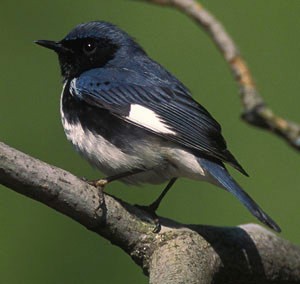Humans have a long time to choose if, when, and how many times to reproduce. But many animals have short lives and must spend most of their time surviving and ensuring the perpetuation of their genes. Take, for example, the black-throated blue warbler, a migratory songbird found in the summer in the Northeast. Each year, it has a 40 to 45 percent chance of survival, so it must make offspring its highest priority. The success of the species depends on it.
But what, exactly, makes for successful reproduction? Surely, the number of offspring. As an approximation of the number of offspring, scientists often use the number of eggs produced in each breeding attempt, or what’s otherwise known as the fecundity of a species, its potential reproductive capacity (potential, since not all eggs will become adults). In species that live a long time and have many years in which to reproduce, adult survival is most important factor, because a long-lived adult will produce many young per year if averaged over its long lifetime. But in short-lived species, it’s most important to produce as many young as soon as possible, so annual fecundity is the most important factor in predicting future population size.
Knowing what regulates population is especially important in understanding how animal populations will respond in the face of threats posed by global warming and habitat fragmentation. In animals that often reproduce more than once in a single season – like the black-throated blue warbler – the number of breeding attempts in a season, rather than the number of young produced in each attempt, is the best way to judge the birds’ fecundity and to understand what drives its population size.
Drs. Richard Holmes and Laura Nagy of Dartmouth College examined fecundity in black-throated blues and found that the number of seasonal breeding attempts (one versus two) was strongly tied to food availability; this finding challenges the prevailing view that for most migratory birds, food is not a limiting factor for populations in the breeding period. When females were given extra food after their first clutch of eggs was laid, they were more likely to breed for a second time than were the hungrier females on an unsubsidized diet.
This finding suggests that under natural conditions, the annual fecundity of black-throated blues is primarily limited by food availability. Thus, population growth of this – and other – migratory songbirds breeding in northern temperate forests is strongly dependent on food resources, which for this species includes adult and larval butterflies, crane flies, other adult flies, and arthropods such as spiders. These food items and other key habitat elements for black-throated blue warblers are found in northern hardwood forests, especially those with a dense, shrubby understory. Silvicultural practices fostering such an understory have proven beneficial to populations of black-throated blues studied in Maine and the Adirondacks.


